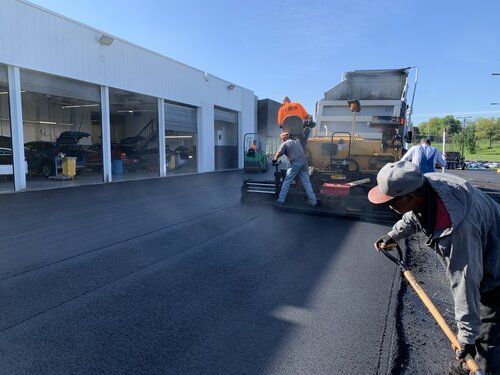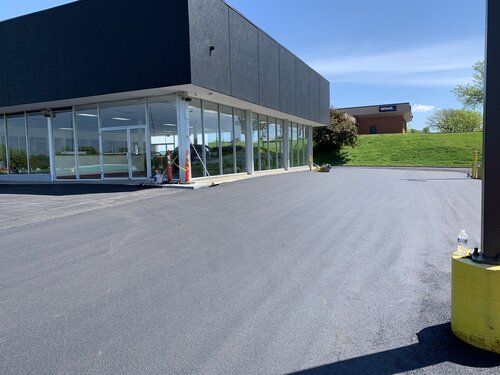Introduction
When it comes to maintaining your asphalt surfaces, whether they are driveways or parking lots, sealcoating is an essential process that shouldn't be overlooked. As the protective layer that shields your asphalt from the harsh elements, sealcoating extends the life of your pavement and enhances its appearance. But one frequently paving companies near me asked question stands out among many: How long does sealcoating take to dry? Answers Revealed!
In this comprehensive article, we will delve into the drying times associated with sealcoating, the factors that influence these times, and provide insights into the best practices for asphalt maintenance. Whether you're a homeowner considering asphalt driveway installation, a business owner eyeing parking lot paving, or an enthusiast looking for tips on asphalt maintenance, this guide has something for everyone.
Understanding Sealcoating
What is Sealcoating?
Sealcoating is a process that involves applying a protective sealant over asphalt surfaces. This preventive measure helps protect against UV rays, water damage, oil spills, and chemical exposure. Without proper sealcoating, asphalt can deteriorate over time, leading to costly repairs.
The Importance of Sealcoating for Asphalt Driveways and Parking Lots
For both residential and commercial properties, sealing your asphalt surfaces is vital. It not only protects but also provides an aesthetically pleasing finish that enhances curb appeal. For businesses, a well-maintained parking lot signifies professionalism and attention to detail.
Factors Influencing Sealcoating Drying Time
Environmental Conditions
The weather plays a significant role in how long it takes for sealcoating to dry. Factors such as temperature, humidity, and wind speed can affect drying time drastically.
Temperature
- Hot weather speeds up evaporation. Ideal temperatures range between 50°F - 90°F for optimal drying.
Humidity Levels
- High humidity slows down the drying process. Low humidity allows faster drying times.
Wind Speed
- A gentle breeze can help accelerate drying. Still air retains moisture longer.
Type of Sealant Used
Different types of sealants have varying drying times. Common options include:
- Coal Tar Emulsion Asphalt Emulsion Acrylic-based Sealers
Each type offers unique benefits and drying characteristics which should be considered before application.
Application Thickness
The thickness of the applied sealcoat significantly influences how long it takes to cure fully. Thicker applications may take longer to dry compared to thinner layers.
Surface Condition Prior to Application
A clean and well-prepared surface ensures better adhesion and quicker drying times. Any debris or damage should be addressed before applying sealant.
How Long Does Sealcoating Take to Dry? Answers Revealed!
Typically, you can expect sealcoating to take anywhere from 24 hours to several days before it is completely cured. However, several variables come into play:
Initial Drying Time:- Most products allow light foot traffic within 2-4 hours post application. Vehicle traffic should generally wait at least 24 hours.
- Complete curing may take up to 72 hours depending on environmental factors.
- Spring and fall typically provide ideal conditions for sealcoat application. Summer heat accelerates initial drying but may lead to peeling if not monitored closely.
- Always consult with local asphalt companies or contractors experienced in asphalt paving services for precise timelines based on specific conditions.
Best Practices Post-Sealcoating Application
Avoiding Traffic Immediately After Application
To ensure optimal results:
- Avoid foot traffic for at least four hours. Keep vehicles off the surface for at least 24 hours.
Monitoring Weather Conditions Post-Sealcoat Application
If rain or high humidity is forecasted shortly after application:
- Consider delaying the application until conditions improve.
Regular Inspections Post-Curing Period
After curing:

Common Questions About Sealcoating Drying Times
FAQ 1: What happens if it rains shortly after application?
Rain can disrupt the curing process and lead to uneven surfaces; hence it's crucial to monitor weather conditions beforehand.
FAQ 2: Can I walk on my driveway after sealing?
You should avoid foot traffic on your driveway for at least four hours post-sealcoat application.
FAQ 3: How often should I apply sealcoat?
It’s recommended every two years for high-traffic areas but consult with professionals based on your specific conditions.
FAQ 4: Are there any DIY options available?
Yes! However, hiring professional asphalt paving contractors ensures quality workmanship and adherence to best practices.
FAQ 5: What is the cost of sealcoating?
The average cost varies by location but generally ranges from $0.15-$0.25 per square foot depending on multiple factors including location and material used.
FAQ 6: Is coal tar better than asphalt emulsion?
Both have benefits; coal tar offers superior protection while asphalt emulsion is more environmentally friendly but might not last as long under heavy traffic conditions.
Benefits of Asphalt Sealcoating Services
Sealcoating offers numerous advantages that make it an essential aspect of pavement maintenance:
Protects against oxidation caused by UV rays Prevents water intrusion leading to cracks Enhances aesthetic appeal Reduces repair costs in the long runComparative Analysis of Different Sealants
| Type | asphalt paving Advantages | Disadvantages | |------------------------|------------------------------------------|---------------------------------------| | Coal Tar Emulsion | Strong protection against UV rays | Strong odor during application | | Asphalt Emulsion | Environmentally friendly | May require more frequent reapplication| | Acrylic-based | Quick-drying | Higher upfront cost |
Conclusion
Understanding how long sealcoating takes to dry is crucial when planning maintenance schedules or new installations such as an asphalt driveway or parking lot paving project. The timeline can vary based on environmental conditions, type of materials used, application technique, and other variables discussed in this article.


By ensuring you follow best practices post-sealcoat application—like avoiding premature traffic—you protect your investment in your asphalt surface while enhancing its lifespan significantly through regular maintenance routines like sealing every couple of years with appropriate services offered by reliable paving companies in your area.
Remember always consult with seasoned professionals who provide comprehensive insights tailored specifically towards ensuring you get the most out of your investment in quality paved surfaces!